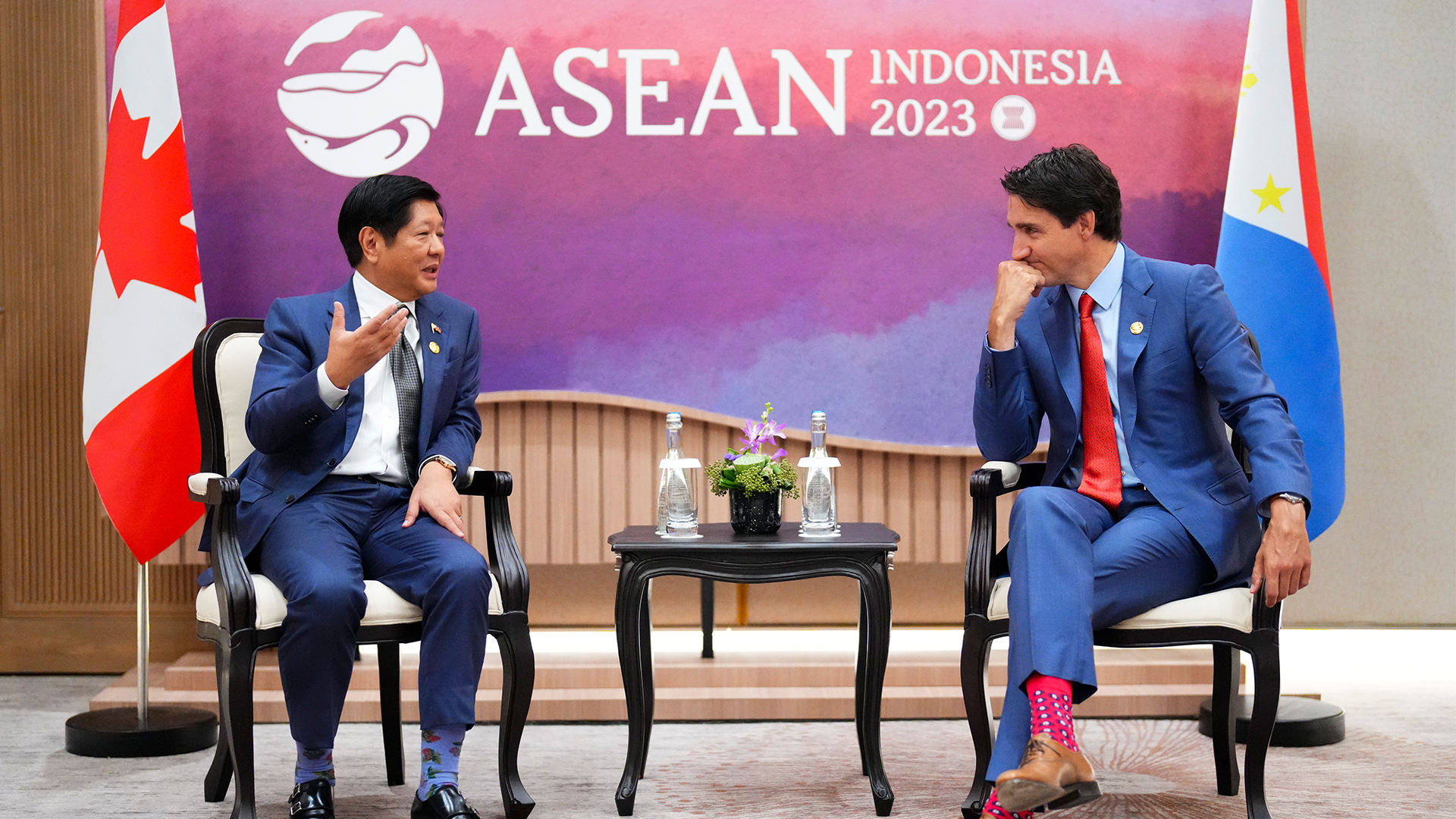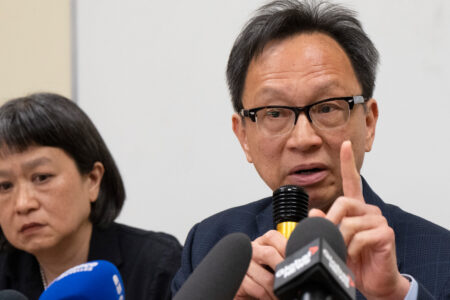
Canada is a Pacific nation by geography, demography and history. Politics and colonial history have anchored Canada in the Atlantic, but the forging of a dominion from “sea-to-sea-to-sea” made the Pacific destiny. Unfortunately, the gaze has continued to look east, and the look west often appears apprehensive, over the shoulder, a look behind.
For a time, the gaze has turned with hope toward China trusting in Canada’s benign influence and hoping that Asian giant would stimulate this country’s awakening as a Pacific nation.
Engagement with India and South Asia is part of the legacy of the British Commonwealth and was for a long time shorn of material or security interests. As far back as the Second World War, Canada made the decision to focus on the European theatre and not engage in the Pacific against the Japanese except for an ill-fated and tragic role in the defence of Hong Kong urged on Canada by Britain.
Our post-war role in NATO continues this trend. Our engagement in Korea is reluctant and in Vietnam it is negative. Canada’s weak presence in Asia diminishes its global clout and marginalizes the importance to its senior ally, the U.S., for whom security in the region is its foremost preoccupation.
Significantly, Canada seems to pay attention to security issues in the Pacific in alignment with its Atlantic allies rather than standing on its own diplomatic policies. This trend continues to this day.
The shock of the two Michaels affair alerted Canadians to China’s emergence as a disruptive great power. In the aftermath, Canada’s Indo-Pacific strategy was designed to support our senior ally, cobble together a network that might mitigate China’s influence regionally and globally. The goal is to integrate a global strategy interested in upholding a liberal rules-based order where democracies are protected and the rule of law is safeguarded.
The Indo-Pacific strategy sits uneasily on two pillars that support Canadian allies in the region with a commitment to demonstrate this country’s relevance to Asian nations on the periphery of China, particularly the Association of Southeast Asian Nations (ASEAN).
At the same time, Canada recognizes but has not committed to ASEAN’s self-declared “centrality” in the region. Canada has also not committed to beefing up a security role in the western Pacific in a way that would substantially enhance the military effectiveness of the U.S. and its allies in the region.
Coincidentally, no significant inroads have been made in repairing wobbly relations with India, while relations with China remain in a deep freeze.
In short, the strategy is not designed to increase leverage within the region, nor in relations with the United States. It is minimally designed to reassure allies that Canada is on board while signalling to other Asian nations that it wishes to stay in contact.
The problem with this stance is that it does little to secure the interests of Asian nations not formally aligned with either the U.S. or China.
To those wary of China’s growing might, Canada provides little weight to counteract that power. To those who wish to hedge while securing the benefits of Chinese trade and investment, Canada’s threadbare relationship with China makes for an uncertain partnership at best and at worst irrelevant to their most immediate concerns.
Hyphenated Canadians from the Indo-Pacific do not appear to hold a single coherent view of the region and Canada’s role there. Some prioritize human rights and some prioritize close relations with their ancestral homelands. Some wish to promote democracy and the rule of law, and some wish to play a role in fostering closer economic relations.
Canadian governments wish to engage multicultural communities in supporting regional outreach partly to shore up electoral support for the ruling party but there is no consensus between communities or even within these communities about what is the best role for Canada to play.
Concerns about China’s strategic goals and dissent from liberal norms and values is at the core of the Indo-Pacific strategy. However, Canada’s diplomatic estrangement from Beijing is an outlier among G7 nations and exceeds even that of deterrence-conscious U.S. allies in the region like Australia, South Korea and Japan.
Canada stands alone in the absence of ministerial or high-level diplomatic encounters. In late August, the official opposition asked Environment Minister Steven Guilbeault to not attend a meeting at the end of the month with the China Council for International Cooperation on Environment and Development.
Yet any discussions on climate change cannot happen without engaging the world’s largest carbon emitter and leader in deploying green technology – China. (And Guilbeault attended the meeting.) Even amidst of suspicions of Chinese state interference in Canada’s electoral process, a desire to exact retribution from China hobbles Canadian global diplomacy, let alone relations within the region.
Canadian interests require a businesslike relationship with China even as concerns build over human-rights issues. Shunning China undermines credibility in the region and diminishes Canada’s global stature.
A mature approach to China must acknowledge key differences while recognizing areas of interest that are shared. Meeting the Chinese state on commonalities without criticism will advance the cause.
Pursuing Canadian interests also requires investment in strategic niches so contributions can be made to the deterrence objectives of our global and regional allies. Deterrence means countering Chinese efforts to unilaterally change the status quo over Taiwan and the South China Sea with credible force.
If Canada is not prepared to invest more heavily in its defence contributions to the western Pacific, it needs to find ways in which its contribution will be distinct and noticed. This does not stand in contradiction to the need to retain a working relationship with Beijing. U.S. allies in the region maintain active diplomatic outreach and healthy trade and investment flows with China. Canada should work with regional allies on best deploying its comparative advantage.
Agriculture, energy and strategic minerals along with the technologies to produce them are a strength. Indeed, despite a desire for “de-risking” and “friend-shoring,” estrangement from Asian value chains, all of which run through China, constitutes a threat to Canada’s economic future. Managing risks means working together with regional allies to build resilience into vital supply chains.
America’s regional allies do not shun China. For most, China is their number one trading partner and all are careful to balance deterrence with diplomatic outreach. That outreach has been absent for Canada since 2018. New Zealand has avoided adopting a strong deterrence approach but has also found a niche as a key American ally in mitigating Chinese influence in the Pacific island nations.
Canada needs to find a niche where it is both an effective ally and a relevant player. The Comprehensive and Progressive Agreement for Trans-Pacific Partnership regional trade bloc has not been utilized to any significant advantage, even at a time when the U.S. is unwilling or unable to forge new multilateral trade deals. In the meantime, China has forged ahead with its own trade bloc – the Regional Comprehensive Economic Partnership.
The prospect of a bilateral free trade deal with India remains a distant and forlorn hope for Canada. To access electric-vehicle value chains and to preserve the domestic auto industry, improvements must be made because most of these chains run through Asia, including China. Given that Mexico is now the United States’ largest trade partner, putting Canada in second place, the list of trading partners is shrinking – not expanding.
Innovating for Asian emerging markets will help diversify our economy
Canada should support Southeast Asian nations to help deal with China’s clout
The focus on a partnership with the Republic of Korea is welcome. Deepening that partnership to exercise middle-power diplomacy regionally and exploring a global partnership may be wise. However, there must be a recognition of a deep left-right divide in South Korea’s politics that makes it unwise to tether Canadian policy to any administration.
The Philippines is another country that in recent years has become one of the top sources of immigration and labour to Canada. It is also a country with entrenched problems of governance. Assistance in improving that situation will go some way toward enhancing regional security as well as diluting China’s influence.
An ASEAN-sponsored means of sharing information with regional players including those regional allies makes sense. Paying close attention to ASEAN centrality is a way to consult regionally without appearing to participate in a containment strategy that is China’s nightmare and unwelcome in ASEAN. ASEAN’s diplomatic infrastructure can be used to mitigate and ideally set aside the notion that the Indo-Pacific strategy is uniquely designed to satisfy Washington.
Even with China in the grip of self-inflicted stagnation, the Asian economies remain a core centre of present and future economic growth. Prudence and self-interest dictate that Canada should remain engaged and face the Pacific with the firm assurance that this is its future.
There must be a way to reshape relations beyond traditional commitments anchored in the Atlantic. In many ways this country’s relationship with the Indo-Pacific is a microcosm of today’s multiplex world. Canada’s strategic outlook should be shaped accordingly.
This article is part of a series on the future of Canadian foreign policy.
Also in the series:
- Walter Kemp on the need for a policy review
- Louise Blais on how Canadian foreign policy has gone wrong
- Zachary Paikin on middle power status and a new northward direction
- Andrew Latham on redefining Canada’s core interests
- Caroline Brouillette on climate change and foreign policy









